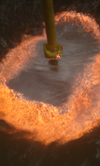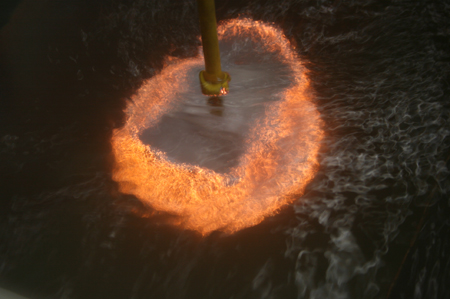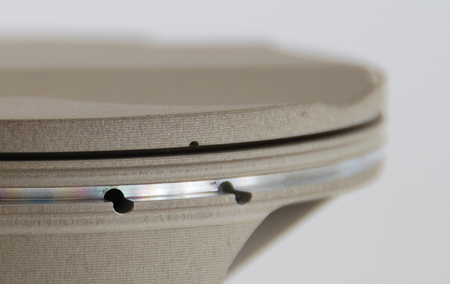Keronite coatings
 In a recent RET-Monitor article on the subject of surface treatments for magnesium, mention was made of plasma electrolytic oxidation treatments. One such treatment that has found application in motorsport is Keronite, and while it is popularly used for surface treatment of magnesium components, the process can also be used with the other popular light alloy materials, namely aluminium and titanium.
In a recent RET-Monitor article on the subject of surface treatments for magnesium, mention was made of plasma electrolytic oxidation treatments. One such treatment that has found application in motorsport is Keronite, and while it is popularly used for surface treatment of magnesium components, the process can also be used with the other popular light alloy materials, namely aluminium and titanium.
I discussed the process with Dr James Curran, principal materials engineer at Keronite. Much of the initial engine work had come from Formula One applications, and the progress being made in expanding the motorsports business has been slowed by the engine development freeze, although applications in homologated components continue. The main commercial progress is now made outside motorsports in industries as diverse as semiconductor manufacture, racing yachts and bicycles.
As for current motorsports engine applications, Dr Curran says the main applications are turbocharger rotors, valvetrain components and the crowns, rings grooves and skirts of racing pistons. Many of these parts are aluminium, reflecting the fact that little magnesium is used currently in motorsports engines. Where magnesium is treated, Dr Curran says that, in general, magnesium parts are subjected to a further treatment such as a polymer coating or other top coat.
I asked Dr Curran what the advantages of the process are compared with a conventional hard-anodising process. He says, "The main advantages stem from the coating composition. Whereas hard-anodising processes form amorphous alumina, the Keronite process converts this to crystalline alumina". Alumina, or aluminium oxide, (a-Al2O3), known as 'corundum' in mineral terms, and is what constitutes sapphire and ruby gemstones.

"This means that hardnesses of between 1500 and 2000 HV are readily achievable with the Keronite process, making aluminium surfaces harder than steels, sand, glass and most other wear counterparts." He went on to talk of the adhesion of the surface treatment and also its strain tolerance, which is helped by the low elastic modulus of only 30 GPa.
The structure of the Keronite layer, the porosity of which is "significantly finer and more complex than that of a hard anodised layer", gives benefits in corrosion protection compared with anodised layers, according to Dr Curran.

It should be noted that both anodising and Keronite produce an aluminium oxide surface layer, and it is well documented that anodising processes have a deleterious effect on the fatigue strength of aluminium alloys, which I asked Dr Curran about. He explains, "There is a fatigue penalty (simply because metal volume is being replaced with a lower toughness ceramic), but the effect is generally smaller for a Keronite layer than for an equivalent thickness of hard-anodised coating. In practice, a much thinner layer of Keronite can usually outperform thick anodising, and the penalty is thus further minimised - typically less than half that of a hard-anodised finish."
I also asked him about the main applications of the process for titanium, a material that can also be anodised. He says titanium is mainly treated to prevent galling, corrosion/oxidation and for electrical insulation, and that many titanium parts thus treated also benefit from a further application of solid-state lubricants.
Fig. 1 - This dramatic picture shows a piston being treated with Keronite (Courtesy Keronite)
Fig. 2 - This surface-treated piston has a coated crown and skirt. Note that the parts can be masked as shown by the untreated ring groove (Courtesy Keronite)
Written by Wayne Ward